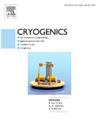Effect of HTS tape resistive layers cross-sectional area on the inrush current waveform of a 13.8 kVA transformer
IF 2.1
3区 工程技术
Q3 PHYSICS, APPLIED
引用次数: 0
Abstract
Under certain circumstances, when inrushing a superconducting transformer into the power grid, a current many times the rated current of the device may flow. This current can interfere with the operation of the power grid and the equipment connected to it including transformers. The value of the inrush current and its duration is strongly influenced by the resistance of the windings of the transformer being switched on. In normal operation, the superconducting windings of the transformer have zero resistance. As a result, the inrush currents of superconducting transformers reach higher values and longer durations compared to transformers with copper windings. It is possible to build a superconducting transformer that exhibits the ability to dampen the inrush current. This requires designing the windings to be capable of losing and recovering the superconducting state without the risk of damage due to dynamic forces and temperature rise. The resistance of superconducting tapes in the resistive state is crucial. This resistance largely depends on the structure of the superconducting tape used in their construction. The type and cross-sectional area of the resistive layers of the tape have a large influence on this resistance. This paper analyses how changing the thickness of these layers affects the suppression of inrush current.
高温超导带阻层截面积对13.8 kVA变压器浪涌电流波形的影响
在某些情况下,当超导变压器进入电网时,可能会产生数倍于设备额定电流的电流。这种电流会干扰电网和与之相连的设备(包括变压器)的运行。励磁涌流的值及其持续时间受到被接通变压器绕组电阻的强烈影响。正常运行时,变压器的超导绕组电阻为零。因此,与铜绕组的变压器相比,超导变压器的涌流达到更高的值和更长的持续时间。有可能制造出一种超导变压器,显示出抑制涌流的能力。这就要求设计出能够失去和恢复超导状态的绕组,而不会因动力和温度升高而损坏。超导带在电阻状态下的电阻是至关重要的。这种电阻在很大程度上取决于超导带的结构。胶带电阻层的类型和横截面积对该电阻有很大的影响。本文分析了改变这些层的厚度对抑制浪涌电流的影响。
本文章由计算机程序翻译,如有差异,请以英文原文为准。
求助全文
约1分钟内获得全文
求助全文
来源期刊

Cryogenics
物理-热力学
CiteScore
3.80
自引率
9.50%
发文量
0
审稿时长
2.1 months
期刊介绍:
Cryogenics is the world''s leading journal focusing on all aspects of cryoengineering and cryogenics. Papers published in Cryogenics cover a wide variety of subjects in low temperature engineering and research. Among the areas covered are:
- Applications of superconductivity: magnets, electronics, devices
- Superconductors and their properties
- Properties of materials: metals, alloys, composites, polymers, insulations
- New applications of cryogenic technology to processes, devices, machinery
- Refrigeration and liquefaction technology
- Thermodynamics
- Fluid properties and fluid mechanics
- Heat transfer
- Thermometry and measurement science
- Cryogenics in medicine
- Cryoelectronics
 求助内容:
求助内容: 应助结果提醒方式:
应助结果提醒方式:


